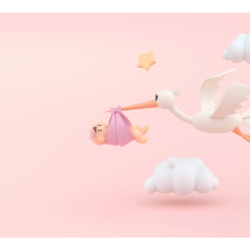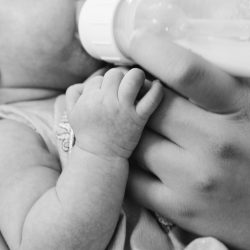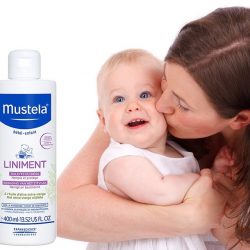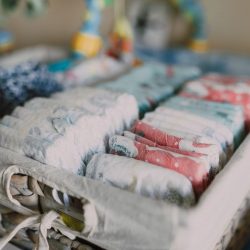How to treat a baby’s cold?
The rhinovirus (HVR = Human Rhino Virus) was discovered in the 1950s. The etiological agents (pathogens) put forward are those of the common cold with respiratory tropism. This virus grows in the nasal passages and generally circulates in all countries and all year round.
Children are the main reservoir of HRV, however, it should be taken into account that in 15% of children, this pathology is asymptomatic. Incubation of HRV is on average two days, the maximum concentration of this pathology is found in the secretions after 48 hours. Note that HRV is responsible for the majority of benign infections of the upper airways (nose, nasal cavity, mouth, pharynx and larynx).
The common cold is therefore an acute, self-limiting viral infection, usually afebrile, causing symptoms of the upper respiratory tract, such as rhinorrhea, cough, and sore throat. The diagnosis is clinical. Hand washing helps prevent its spread.
Rhinovirus infections are very common in the fall and spring and less common in the winter. These colds are most often transmitted by direct person-to-person contact, although the spread can also be via coarse aerosols.
Treat cold symptoms
After an incubation of 24 to 72 hours, cold symptoms begin with a burning sensation and irritation in the throat, followed by sneezing, rhinorrhea, nasal obstruction and feeling unwell. The nasal secretions are fluid and abundant during the first days, but thicken and then become purulent. Mucopurulent secretions do not reflect bacterial superinfection. The cough is usually mild, but often lasts until the 2nd week. Most symptoms of an uncomplicated cold resolve within 10 days.
-
Wash baby’s nose
- Lay baby on his back or on his side and keep his head tilted to avoid the risk of false routes
- Gently place the tip of the physiological saline pod (avoid mineral water and tap water which may contain germs) at the entrance of the nostril
- Press the pod to fully introduce its content into the nostril so that the serum comes out through the other nostril
- Wait until your baby has swallowed normally
- Wipe his nose with a tissue
- Remember to take a break between the two nostrils to allow him to catch his breath.
-
Raise the top of the mattress
Raising the top of the mattress prevents mucus from falling into his throat and making his cough worse
-
Humidify the air
Humidifying the air will allow baby to breathe better
-
Give baby a warm bath
Making baby take a hot bath will unclog his nose
-
Air the room
It is important to ventilate the room for at least 30 minutes a day in order to renew the air and remove germs
-
Moisturize baby
Remember to hydrate your child as much as possible in order to thin the phlegm
Antiviral aromatherapy
As a general rule, it is best to avoid using essential oils on pregnant or breastfeeding women, especially in the first three months of pregnancy when fetal tissue is forming, as well as in children due to enzymatic immaturity. infantile.
Some essential oils can be toxic and dangerous without controlling their precautions for use. It is therefore recommended to move towards homeopathy or hydrolatherapy (floral waters) for pregnant or breastfeeding women, as well as for children.
The hydrolathérapie is a branch of aromatherapy. Indeed, a hydrosol is a distillation water or floral water obtained during the steam distillation of an aromatic or medicinal plant, in order to obtain an essential oil.
A hydrosol is not as powerful as an essential oil, however, being constituted by water (floral water), it retains water-soluble odorous molecules and remains slightly scented, possessing certain therapeutic properties; such as orange blossom water used to regulate children’s sleep for example.
Hydrosols to treat colds in children
- Oral eucalyptus globulus hydrosol is indicated for winter pathologies and more specifically for bronchial coughs
This hydrosol is naturally draining from the respiratory tree. It is in particular expectorant and mucolytic, bronchial antispasmodic and antiviral. In addition, eucalyptus is immunostimulant, analgesic and anti-inflammatory.
- Thyme thymol hydrosol as a gargle or by mouth is indicated in respiratory infections, asthenia, tonsillitis, pharyngitis and laryngitis
This floral water contributes to the body’s natural defense. It softens breathing, helps fight asthenia and has powerful antiviral activity.
Internally, hydrosols are used at a rate of 1 tablespoon in 1 glass of water, 1 to 2 times a day for adults and 2 teaspoons once a day for young children in a bottle. of water.





